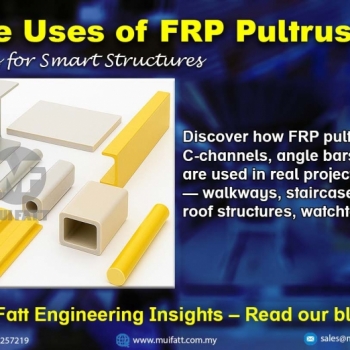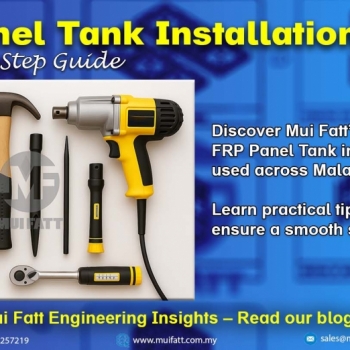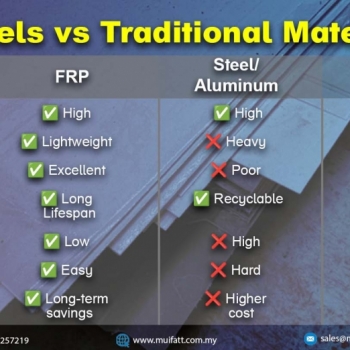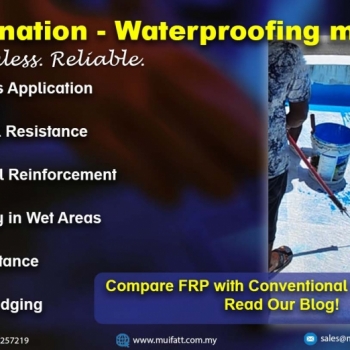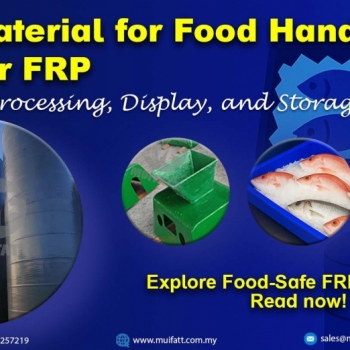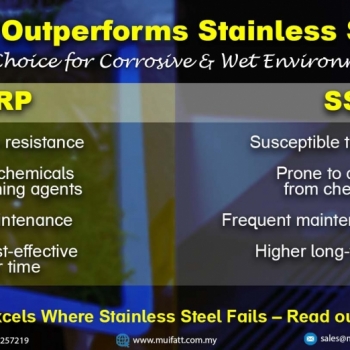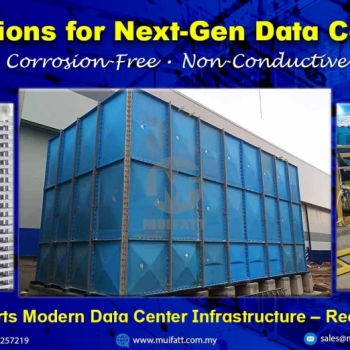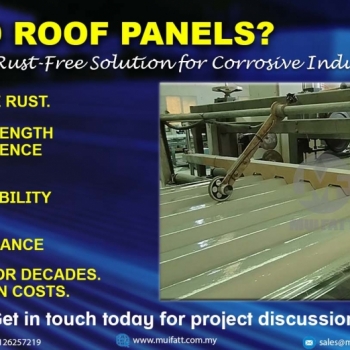FRP pultruded profiles are reshaping structural possibilities across Malaysia. From STP staircases to public park shelters, explore how these modular components enable custom FRP solutions—only from Mui Fatt.
Understanding FRP Filament Winding: Process, Benefits & Comparison
15 May 2025
- Key Takeaways
- What is FRP Filament Winding?
- The Filament Winding Process – Step by Step
- Other FRP Manufacturing Methods
- Filament Winding vs. Other Methods
- Why Filament Winding is Still Widely Used
- Project Example: FRP Portable Water Tanks for NURA
- Frequently Asked Questions (FAQs)
Key Takeaways
-
Filament winding is ideal for producing high-strength, cylindrical FRP components.
-
Offers excellent control over fiber orientation, contributing to superior performance in pressure-bearing applications.
-
Compared to hand lay-up or pultrusion, it is more automated and consistent.
-
Mui Fatt continues to use this method due to its durability, reliability, and proven results in real projects.
-
A sustainable method, when coupled with long service life and minimal material waste.
In the fiberglass manufacturing world, the method you choose matters. While hand lay-up and pultrusion dominate certain applications, filament winding stands out for its precision and strength. This article explores why FRP filament winding remains a vital manufacturing process at Mui Fatt, its key differences compared to other methods, and how it adds value to pressure-intensive and cylindrical projects.
What is FRP Filament Winding?
FRP filament winding is a fabrication technique that involves winding resin-impregnated glass fiber strands over a rotating mandrel. It is mainly used to produce hollow, cylindrical parts such as:
-
Water tanks
-
Pressure vessels
-
Chemical storage tanks
-
Piping
This method allows precise control of the fiber angle and resin content, resulting in a very strong, lightweight, and corrosion-resistant structure.
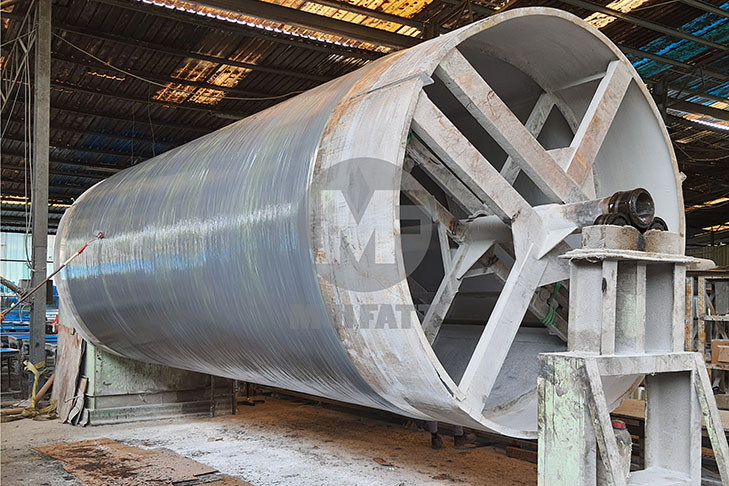
The Filament Winding Process – Step by Step
-
Mandrel Setup: A rotating mold (mandrel) defines the shape of the product.
-
Fiber Winding: Continuous fibers (usually glass or carbon) are soaked in resin and wound around the mandrel at specific angles.
-
Curing: The wound product is cured—either by heat or ambient conditions—to harden.
-
Mandrel Removal: Once cured, the mandrel is removed, leaving behind a durable FRP structure.
This process can be automated and programmed, ensuring repeatability and accuracy.
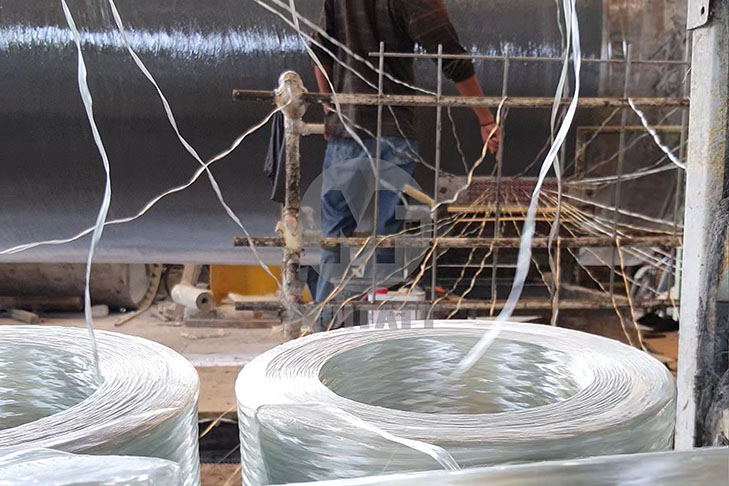
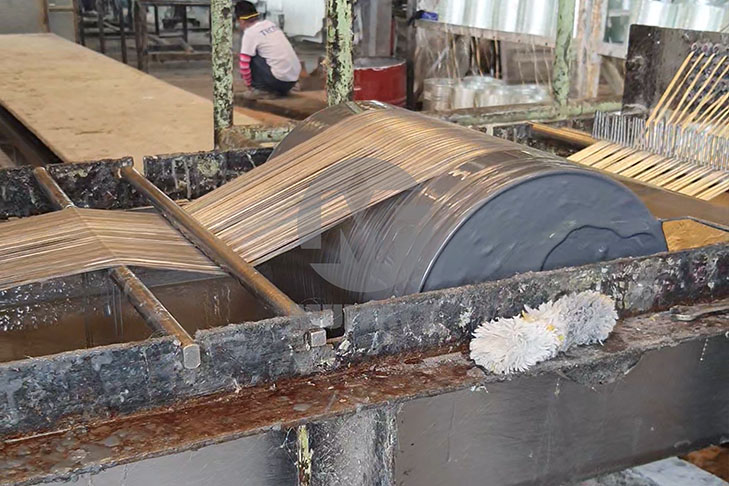
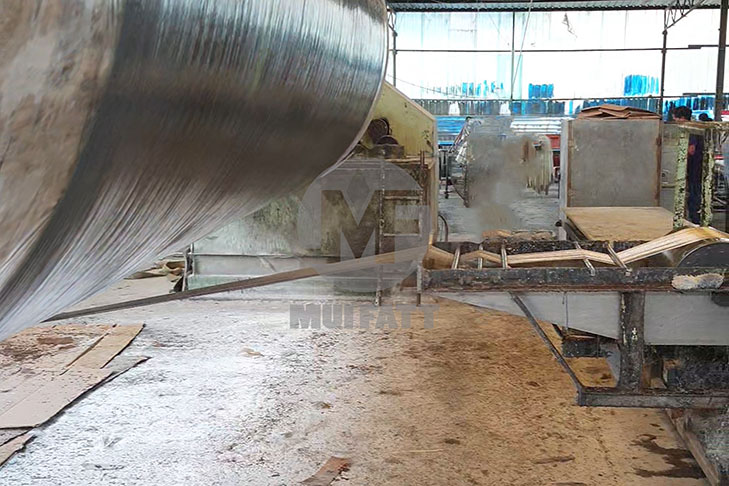
Other FRP Manufacturing Methods
Mui Fatt applies three main methods in FRP production:
| Method | Suitable For | Strengths |
|---|---|---|
| Hand Lay-Up | Large, complex, low-volume parts | Cost-effective, highly customizable |
| Pultrusion | Constant cross-section profiles | Continuous production, strong and rigid |
| Filament Winding | Cylindrical, high-pressure components | Superior fiber alignment, pressure rating |
Each method suits different applications. Understanding your project needs is key to selecting the right one.
Filament Winding vs. Other Methods
| Criteria | Filament Winding | Hand Lay-Up | Pultrusion |
|---|---|---|---|
| Fiber Control | High | Low | Medium |
| Strength | Excellent for pressure | Moderate | High (for linear profiles) |
| Automation | High | Manual | Automated |
| Shape Flexibility | Limited to cylindrical shapes | Highly flexible | Limited to fixed profiles |
| Surface Finish | Smooth internal & external | Variable | Very smooth |
Why Filament Winding is Still Widely Used
Despite being older than some newer techniques, filament winding remains relevant because:
-
It produces consistently high-strength products.
-
It enables weight reduction without sacrificing structural integrity.
-
It is ideal for portable water tanks, pressure vessels, and chemical tanks.
-
It has minimal material wastage, making it cost-efficient in the long run.
Project Highlights: Proven Results with Filament Winding
FRP Portable Water Tanks Delivered to NURA, 2023
In 2023, Mui Fatt fabricated and delivered 2 units of customized FRP portable water tanks to NURA, designed specifically to be mounted on a water tanker. These tanks were manufactured using the filament winding method, ensuring:
-
High durability for mobile deployment
-
Excellent structural strength to withstand transport stress
-
Corrosion and UV resistance for outdoor use
Read the full case study here - FRP Portable Water Tanks Delivered to NURA, 2023
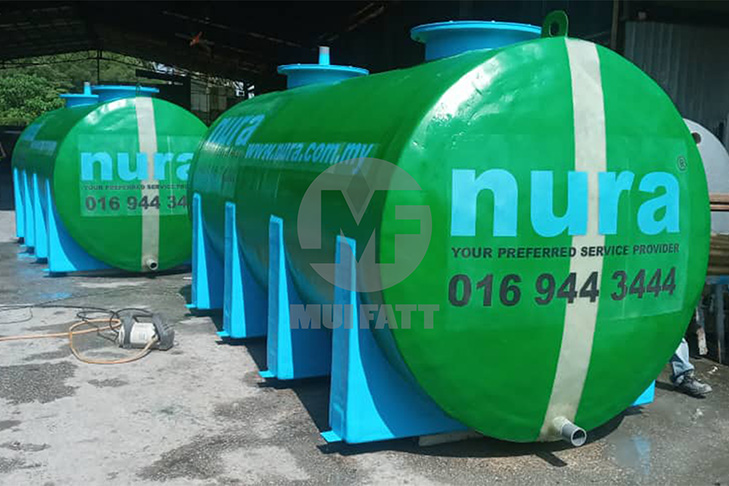
Customized FRP Closed Top Tanks for Ramly Food Processing, 2023
For Ramly’s food processing facility, we supplied 5 units of custom-sized FRP closed-top tanks using filament winding to meet hygiene and operational requirements. These tanks are offered:
-
Smooth inner surface suitable for food-grade applications
-
High chemical resistance for frequent cleaning cycles
-
Durable, leak-proof construction for long-term use in a demanding industrial environment
Read the full project reference - Customized FRP Closed Top Tanks for Ramly Food Processing
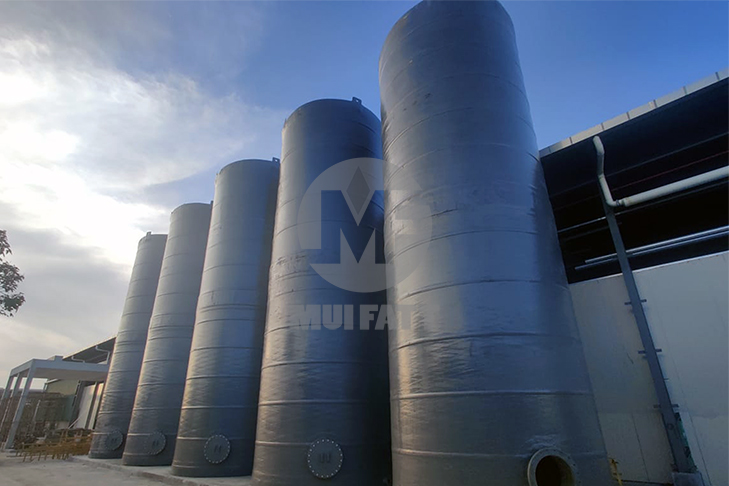
These successful case studies demonstrate how the filament winding method effectively serves diverse project requirements—from mobile water tanks to hygienic food processing storage—by providing durable and customized FRP solutions.
As a proven and reliable manufacturing technique, FRP filament winding excels in applications that demand structural integrity, long-term durability, and high precision. At Mui Fatt, we continue to adopt and refine this process to support a wide range of industries, including construction, water treatment, and chemical handling.
If your project involves cylindrical components or pressure-rated applications, filament winding could be the ideal choice. Reach out to us on WhatsApp or email us at sales@muifatt.com.my for expert consultation.
Frequently Asked Questions (FAQs)
What is the filament winding method used for?
It’s commonly used for manufacturing tanks, pipes, and vessels that require high strength and pressure resistance.
How does filament winding compare to hand lay-up?
Filament winding is more automated, consistent, and stronger in pressure-bearing applications.
Is filament winding suitable for custom shapes?
It is best for cylindrical shapes. Complex, non-symmetrical forms are better suited for hand lay-up.
How long do filament-wound FRP tanks last?
They can last over 20 years with proper use and maintenance.
Is Filament Winding a Sustainable Process?
Yes, especially when used to produce long-lasting components that reduce lifecycle replacement. While energy use is moderate, the low wastage and long product lifespan support sustainability goals. Many filament-wound FRP tanks last over 20 years, reducing carbon and cost footprints.
Does Mui Fatt offer consultation for choosing the right FRP method?
Yes, our engineering team can advise you based on your application, budget, and project size.
#FRPfilamentwinding #FRPmanufacturingMalaysia #fiberglasstanks #FRPmethods #customFRP
Disclaimer:-
The content on this site is for general information and entertainment purposes and does not constitute legal counsel. We strive to keep our information as accurate as possible. However, we make no warranties about the completeness, accuracy, reliability, suitability, or availability with respect to the information contained on this page. You should rely on this information at your own risk. This website may include links to other third-party sites. These links are provided as a convenience to you as a reader, user, or browser only. We make no representation, warranty, or guarantee, nor do we endorse or take responsibility for any of the content of such sites.
Stay in touch with us if you’re interested in hearing from us promptly.
- Website - https://www.muifatt.com.my/home/
- Facebook - https://www.facebook.com/muifattmarketing
- Instagram - https://www.instagram.com/muifattmarketing/
- Google - https://goo.gl/maps/WxVY13gNcaRTS7Jp6
- Youtube - http://www.youtube.com/@MuiFattMarketing
- TikTok - https://www.tiktok.com/@muifattmarketing
- LinkedIn - https://www.linkedin.com/company/mui-fatt-marketing-sdn-bhd-
- Linktree - https://linktr.ee/muifattmarketing
- Shopee - https://www.shopee.com.my/muifattmarketing
- Lazada - https://www.lazada.com.my/shop/mui-fatt-marketing
Recent Blog
Mui Fatt Engineering Insights - FRP Panel Tank Installation
Get to know the step-by-step assembly process of FRP sectional panel tanks, based on Mui Fatt’s industry-proven practices. This easy-to-digest guide is ideal for project managers, contractors, and technical personnel involved in water storage tank installation across Malaysia.
FRP Panels vs Traditional Alternatives: The Ultimate Guide to Durability and Sustainability
Explore why FRP (Fiberglass-Reinforced Plastic) panels outperform traditional materials like steel, plywood, and PVC in durability, sustainability, and cost-effectiveness. Discover real-world applications in MyKiosk projects and cold truck panel assembly, where FRP’s superior insulation, corrosion resistance, and lightweight properties deliver long-term benefits.
Comparing FRP Waterproofing with Traditional Systems
Is FRP lamination a better waterproofing method than traditional systems? Explore this complete guide with real project examples and see why FRP is gaining traction across Malaysia.
Benefits of FRP in Food Handling & Processing
With hygiene, durability, and corrosion resistance at its core, FRP (Fibreglass Reinforced Plastic) is becoming a preferred material in the food industry. This article explores why FRP is ideal for food handling equipment such as supermarket fish trays, water tanks, and food factory platforms, plus how Mui Fatt is delivering proven solutions through its successful FRP applications.
Mui Fatt Insights: Advanced Materials for Modern Needs
Is stainless steel the best for wet areas? This article explains why more industries are switching to FRP for its corrosion resistance, hygiene benefits, and longevity, especially in food displays and chemical exposure zones.
How FRP Supports Modern Data Center Infrastructure
Discover how fiberglass-reinforced plastic (FRP) is reshaping data center construction. Learn its key advantages, comparisons with other materials, and where to apply FRP—from rooftop chillers to cooling tanks.
Rust Problems? Discover Why FRP Roofing Is the Superior Choice
Tired of dealing with rusted roof panels? Learn how FRP roofing offers a corrosion-free, custom-fit solution — and why it outperforms metal for industrial environments.
